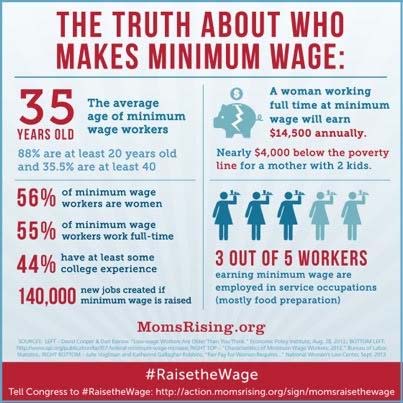
April 4, 2016
Governor Jerry Brown is in Los Angeles today to sign what has been touted as “historic” legislation to raise California’s minimum wage to $15 per hour. Though well-intentioned, the excitement surrounding the legislation is overstated. The incremental annual increases of up to $15 an hour will not be reached until 2022, six years from now. And small businesses (up to 25 employees), the majority of California’s businesses, are provided an additional year to comply. Furthermore, the governor could put wage hikes on hold if there is an economic downturn, a broadly defined term. Thus, the governor has the power to ignore the law, and if he or she does, the $15 goal could be delayed beyond 2022, or indefinitely.
Additionally, the legislation does not increase California’s sick leave law, which is left stuck at three days. Three days is just not enough.
The inadequacy of the legislation can be traced somewhat to the myth that small business owners cannot afford to pay their workers more. But a July 2015 survey disputes this myth. The survey found that small business owners say an increase “would immediately put more money in the pocket of low-wage workers who will then spend the money on things like housing, food and gas. This boost in demand for goods and services will help stimulate the economy and help create opportunities.” No business has the right to continue doing business if it cannot, or will not pay, at least a minimum wage of $15.
A minimum wage in most cases is not a livable wage. What is it like to live on a minimum wage? In her book, “Nickel and Dimed: On (Not) Getting By in America, ” Barbara Ehrenreich, working undercover, got a job at a Minnesota Walmart in ladies clothing, picking up dropped clothing and taking clothing from the dressing rooms and putting them back on the racks. The job was extremely low paying and she was unable to afford much of anything outside her rent. On her wages, she could not buy kitchen items and was unable to cook anything on her own, living instead on fast food that she could find nearby. She found her work at Walmart repetitive and monotonous and began to believe that the employees were working far too hard for the wages they were given. Ehrenreich points out that he main way that wages were kept low was by reinforcing the low self-esteem inherent in each job. This included random drug tests, being yelled at by bosses, being accused of rule infractions, and being treated in many ways more like a child rather than as a woman in her 50s should be treated. She concluded that no job is truly “unskilled,” that even the lowliest occupations require exhausting mental and physical effort. She also learned that one job was not enough; you need at least two if you wanted to live indoors. Of course, Ehrenreich could always go back to her old comparatively privileged life whereas the low-paid workers she worked with could not.
Much has been made about the shrinking middle class in the United States where the wealthiest 160,000 families own as much as the poorest 145 million families. A minimum wage of $15 effective January 2017 would be a modest start toward raising the poorest among us upward. That would truly be historic.


 The Hunger Site
The Hunger Site
April 8, 2016 at 7:19 am
….re-arranging the deck chairs on the titanic.